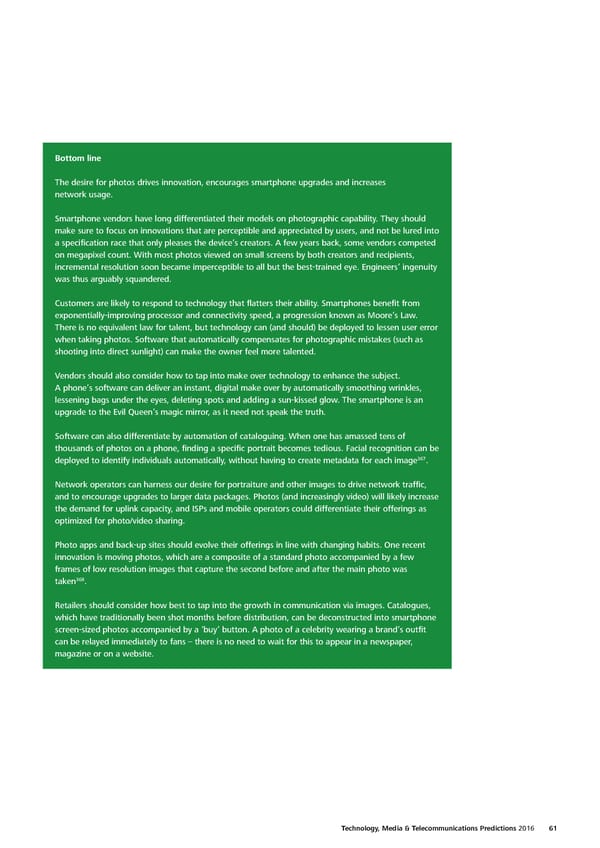Bottom line The desire for photos drives innovation, encourages smartphone upgrades and increases network usage. Smartphone vendors have long differentiated their models on photographic capability. They should make sure to focus on innovations that are perceptible and appreciated by users, and not be lured into a specification race that only pleases the device’s creators. A few years back, some vendors competed on megapixel count. With most photos viewed on small screens by both creators and recipients, incremental resolution soon became imperceptible to all but the best-trained eye. Engineers’ ingenuity was thus arguably squandered. Customers are likely to respond to technology that flatters their ability. Smartphones benefit from exponentially-improving processor and connectivity speed, a progression known as Moore’s Law. There is no equivalent law for talent, but technology can (and should) be deployed to lessen user error when taking photos. Software that automatically compensates for photographic mistakes (such as shooting into direct sunlight) can make the owner feel more talented. Vendors should also consider how to tap into make over technology to enhance the subject. A phone’s software can deliver an instant, digital make over by automatically smoothing wrinkles, lessening bags under the eyes, deleting spots and adding a sun-kissed glow. The smartphone is an upgrade to the Evil Queen’s magic mirror, as it need not speak the truth. Software can also differentiate by automation of cataloguing. When one has amassed tens of thousands of photos on a phone, finding a specific portrait becomes tedious. Facial recognition can be 367 deployed to identify individuals automatically, without having to create metadata for each image . Network operators can harness our desire for portraiture and other images to drive network traffic, and to encourage upgrades to larger data packages. Photos (and increasingly video) will likely increase the demand for uplink capacity, and ISPs and mobile operators could differentiate their offerings as optimized for photo/video sharing. Photo apps and back-up sites should evolve their offerings in line with changing habits. One recent innovation is moving photos, which are a composite of a standard photo accompanied by a few frames of low resolution images that capture the second before and after the main photo was taken368. Retailers should consider how best to tap into the growth in communication via images. Catalogues, which have traditionally been shot months before distribution, can be deconstructed into smartphone screen-sized photos accompanied by a ‘buy’ button. A photo of a celebrity wearing a brand’s outfit can be relayed immediately to fans – there is no need to wait for this to appear in a newspaper, magazine or on a website. Technology, Media & Telecommunications Predictions 2016 61
 Technology, Media & Telecommunications Predictions Page 69 Page 71
Technology, Media & Telecommunications Predictions Page 69 Page 71